Comparisons of the dynamics of local field potential and multiunit activity signals in macaque visual cortex
- PMID: 20943914
- PMCID: PMC3518461
- DOI: 10.1523/JNEUROSCI.0743-10.2010
Comparisons of the dynamics of local field potential and multiunit activity signals in macaque visual cortex
Abstract
The local field potential (LFP) and multiunit activity (MUA) are extracellularly recorded signals that describe local neuronal network dynamics. In our experiments, the LFP and MUA, recorded from the same electrode in macaque primary visual cortex V1 in response to drifting grating visual stimuli, were evaluated on coarse timescales (∼1-5 s) and fine timescales (<0.1 s). On coarse timescales, MUA and the LFP both produced sustained visual responses to optimal and non-optimal oriented visual stimuli. The sustainedness of the two signals across the population of recording sites was correlated (correlation coefficient, ∼0.4). At most recording sites, the MUA was at least as sustained as the LFP and significantly more sustained for optimal orientations. In previous literature, the blood oxygen level-dependent (BOLD) signal of functional magnetic resonance imaging studies was found to be more strongly correlated with the LFP than with the MUA as a result of the lack of sustained response in the MUA signal. Because we found that MUA was as sustained as the LFP, MUA may also be correlated with BOLD. On fine timescales, we computed the coherence between the LFP and MUA over the frequency range 10-150 Hz. The LFP and MUA were weakly but significantly coherent (∼0.14) in the gamma band (20-90 Hz). The amount of gamma-band coherence was correlated with the power in the gamma band of the LFP. The data were consistent with the proposal that the LFP and MUA are generated in a noisy, resonant cortical network.
Conflict of interest statement
The authors declare no competing conflicts of interest.
Figures
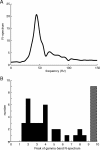


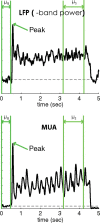

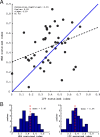
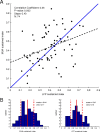

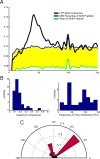

References
-
- Almeida R, Stetter M. Modeling the link between functional Imaging and neuronal activity: synaptic metabolic demand and spike rates. Neuroimage. 2002;17:1065–1079. - PubMed
Publication types
MeSH terms
Grants and funding
LinkOut - more resources
Full Text Sources
